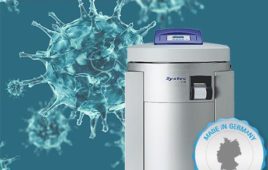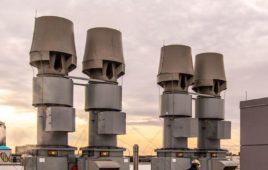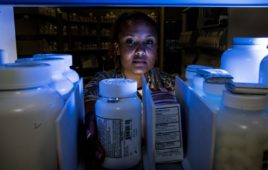The Institute of Environmental Sciences and Technology (IEST) announces the availability of the new revisions to the cornerstone cleanroom standards — ISO 14644, Cleanrooms and associated controlled environments, Part 1: Classification of air cleanliness by particle concentration and Part 2: Monitoring to provide evidence of cleanroom performance related to air cleanliness by particle concentration. The new standards were adopted simultaneously in the United States and in other countries as national standards to replace current versions. To aid in understanding and compliance, IEST is providing the US-approved adoption of the ISO Standards at reduced pricing for a limited period through www.iest.org.
It is vital that cleanroom users, specifiers, and suppliers review the new guidance. The new standards replace the current versions in contracts where specified and may be adopted globally through regulation. Purchase of the standards through IEST supports IEST’s nonprofit mission as Secretariat of ISO/TC 209, the committee that created the standards, and Administrator for the U.S. Technical Advisory Group of national experts. IEST standards purchases also provide quality control assurance in receiving the officially adopted versions of the standards. IEST members receive an additional 20% discount on the standards in appreciation of their support.
ISO 14644-1 and -2 are so critical to the estimated $14 billion cleanroom industry that the revision efforts by the lead ISO/TC 209 Working Group lasted more than ten years, with the ISO Technical Management Board providing a perhaps unprecedented second extension of the drafting period. Contracts and regulations incorporating the previous 1999 version of ISO 14644-1 and 2000 version of ISO 14644-2 should be reviewed. In general, contracts and regulations using a dated citation require review and modification to incorporate the new 2015 versions and undated citations indicate the latest version should be used; however, all contracted parties should review the legal requirements for such references within each contract or regulation.
For professionals seeking expert guidance on the changes to ISO 14644-1 and -2, IEST is offering the course Understanding the Changes to ISO 14644-1 and ISO 14644-2 on Tuesday, February 2, 2016 in Pasadena, TX. Only IEST provides training with Robert Mielke, the renowned 22-year secretary for ISO 14644. This foundational training is a must-attend for anyone new to the cleanroom industry, as well as those who will be affected by the critical changes to ISO 14644-1 and -2.
ISO 14644-1 specifies classes of air cleanliness for the world’s cleanrooms and controlled environments in terms of the number of particles expressed as a concentration in air volume. To determine the class, a specified testing method is required, which includes selection of sampling locations. A major focus in revising ISO 14644-1 (1999) was development of a refined statistical approach regarding the selection and number of sampling locations. The underlying assumption in the 1999 version held that particle counts follow a similar distribution across the room. The new revision discards the previous assumption in order to allow more accurate sampling where particle counts may vary in a more complex pattern.
Another revision in ISO 14644-1 addresses the issues surrounding ≥ 5 μm particle limits for ISO Class 5 in the sterile products annexes of the EU, PIC/S, and WHO GMPs. An adaptation of the macroparticle descriptor is included in the Standard to accommodate the particle size.
ISO 14644-2 emphasizes the need to consider a monitoring strategy in addition to the execution or evaluation of the classification provisions of ISO 14644-1. The requirements of a monitoring plan are detailed, including additional guidance on risk assessment as part of an informative annex.
The mission of ISO/TC 209 is to develop international standards for cleanrooms and associated controlled environments encompassing standardization of equipment, facilities, and operational methods. The committee defines procedural and operational limits and testing procedures to achieve desired attributes to minimize contamination.
IEST serves as the Secretariat for ISO/TC 209 and is also the Administrator for the United States Technical Advisory Group (US TAG) to ISO/TC 209. ISO Standards and IEST Recommended Practices for cleanrooms and controlled environments are available through IEST at www.iest.org.



